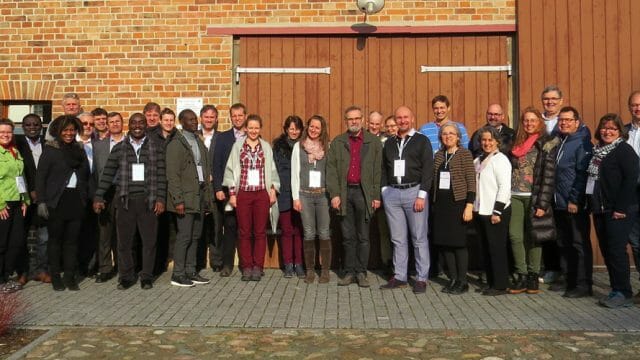160 Years of the Adventist Health Message

Since 1863, Seventh-day Adventists have become gradually known for their promotion of healthful living and lifestyle. Several recent studies have demonstrated that Adventists are significantly healthier and live on average seven to 10 years longer than the general population.1 Ellen G. White, a cofounder of the Adventist denomination, has played a critical role in the establishment of the distinctive Adventist lifestyle practices that stand behind many of these recent findings.
She received her two major health visions in 1863 and 1865. In a way, the two visions proved to be the turning point for the new Seventh-day Adventist denomination. Adventists not only became health reformers but also incorporated health into their overall mission to the world. The health message became a part of their distinctive identity.
The 1863 Health Vision
Sabbathkeeping Adventists officially organized into the Seventh-day Adventist denomination on May 21, 1863, in Battle Creek, Michigan. About two weeks later, on June 6, Ellen White received her first major vision on health. Its message contained general “core” principles related to the importance of healthful living, as well as some specific instructions to James and Ellen White.
The overall message of this first vision was rather simple: Seventh-day Adventists, including James and Ellen White, were to pay better attention to their health. Health was important. Moreover, the vision depicted health in comprehensive terms. Good health was to be a wholistic experience. It was dependent on one’s entire lifestyle. This marked the beginning of Ellen White’s health emphasis in both her thinking and writing.
A year later she wrote down and elaborated further on what she had been shown. In her lengthy exposition, published under the title “Health” in Spiritual Gifts, volume 4, she wrote about diet and the dangers of intemperance, the importance of controlling appetite, the prohibition of eating swine’s flesh, the benefit of a vegetarian diet, the poisonous effect of using tobacco and other stimulants, the importance of hygiene and fresh air, the balance in working and resting, the benefits of water, the use of natural remedies for healing instead of the regular “drug-taking,” the importance of a belief in God, and some other practical health applications.2 She began to describe health in wholistic terms–connected to the physical, emotional, and spiritual essentials of life.3
The 1865 Health Vision
Curiously (or maybe not so curiously), few Adventists responded to Ellen White’s (or rather God’s) message to make health their priority. After all, Jesus was coming soon, and health was not a part of the Seventh-day Adventist mission, they thought. On December 25, 1865, Ellen White received a second major health vision in Rochester, New York. “I was shown that our Sabbathkeeping people have been negligent in acting upon the light which God has given in regard to the health reform,” she penned, “. . . and that as a people we have been too backward to follow in God’s opening providence as He has chosen to lead us. I was shown that the work of health reform has scarcely been entered upon yet.” Then she noted that many believers were either indifferent, did not believe in the importance of health, or simply had made their “taste” and “appetite” their god.4
The 1865 health vision was not only a warning against negligence, however. Ellen White was shown that health was to become a critical part of the Seventh-day Adventist overall mission. “The health reform, I was shown, is a part of the third angel’s message, and is just as closely connected with it as the arm and hand with the human body. I saw that we as a people must make an advance move in this great work,” Ellen White explained.5 Not only were Seventh-day Adventist believers to practice health reform, but the church had a spiritual obligation to teach others of its significance and benefits.
This second vision urged Seventh-day Adventists to establish their own health institutions that would support denominational medical missionary endeavors. In fact, Ellen White noted that medical evangelism had the potential to reach people that could not be reached by other types of evangelism.
“Our people should have an institution of their own, under their own control, for the benefit of the diseased and suffering among us,” she wrote. “Such an institution, rightly conducted, would be the means of bringing our views before many whom it would be impossible for us to reach by the common course of advocating the truth. As unbelievers shall resort to an institution devoted to the successful treatment of disease and conducted by Sabbathkeeping physicians, they will be brought directly under the influence of the truth. . . . By thus being placed under the influence of truth, some will not only obtain relief from bodily infirmities, but their sin-sick souls will find a healing balm.”6
In a way, Ellen White emphasized the relationship that was to exist between the gospel and health ministries. After all, Jesus was doing both—teaching and healing—but devoted “more time to healing” than to preaching.7 Moreover, His healing practices transcended the healing of the physical afflictions only. He made “each work of healing an occasion for implanting divine principles in the mind and soul. This was the purpose of His work.”8 Jesus’ healing ministry included the healing of the whole person, and Seventh-day Adventists were to follow His example. With time Seventh-day Adventists responded to Ellen White’s visions and appeals, and the denomination eventually became a leading entity of promoting wholistic health and healthful living around the globe. Today the Seventh-day Adventist Church has the largest Protestant health system in the world, with hundreds of hospitals, clinics, and nursing and retirement homes around the world. But it all began with a simple message 160 years ago that health was to be a part of the Seventh-day Adventist identity and mission to the world.
1 See, for example, Gary E. Frasier, Diet, Life Expectancy, and Chronic Disease: Studies of Seventh-day Adventists and Other Vegetarians (New York: Oxford University Press, 2003); Dan Buettner, “The Blue Zones: Lessons for Living Longer From the People Who’ve Lived the Longest” (Washington, D.C.: National Geographic, 2008), pp. 123-165.
2 Ellen G. White, Spiritual Gifts (Battle Creek, Mich.: Seventh-day Adventist Pub. Assn., 1864), vol. 4, pp. 120-151.
3 Herbert Douglass has made a rather comprehensive list outlining the principles found in Ellen White’s first vision in his book Messenger of the Lord. See Herbert E. Douglass, Messenger of the Lord: The Prophetic Ministry of Ellen G. White (Nampa, Idaho: Pacific Press Pub. Assn., 1998), pp. 283, 284.
4 Ellen G. White, Testimonies for the Church (Mountain View, Calif.: Pacific Press Pub. Assn., 1948), vol. 1, pp. 485, 486.
5 Ibid., p. 486.
6 Ibid., pp. 492, 493.
7 Ellen G. White, The Ministry of Healing (Mountain View, Calif.: Pacific Press Pub. Assn., 1905), p. 19.
8 Ibid., p. 20.








